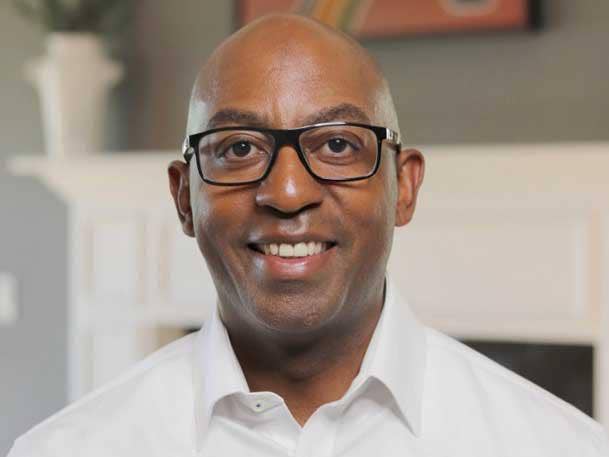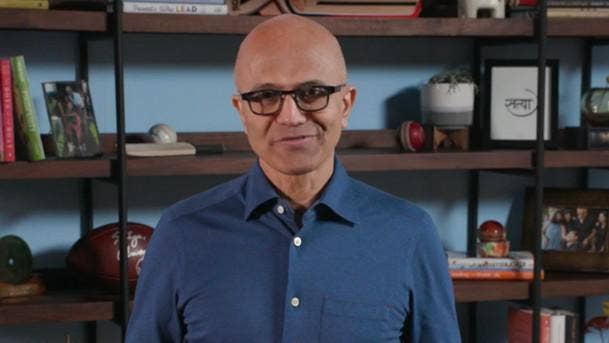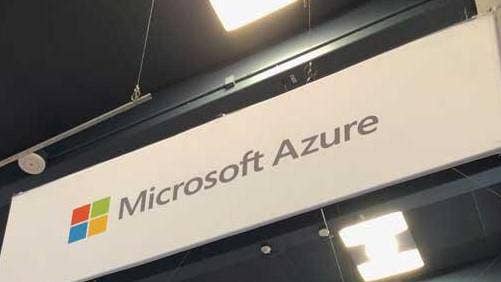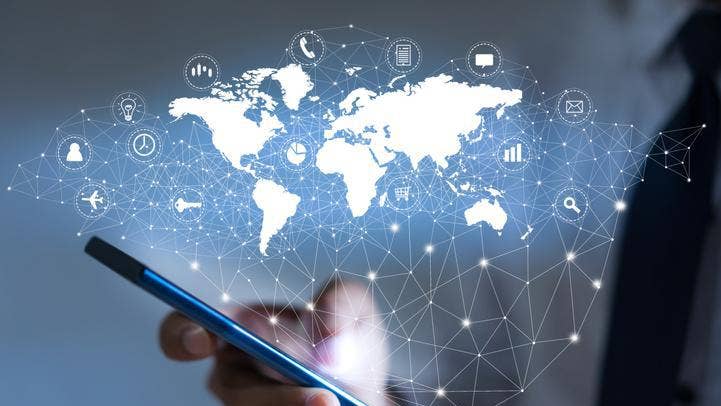7 Boldest Statements By New Microsoft Channel Chief Rodney Clark
The biggest opportunity for Microsoft partners is to continue to evolve and invest in their own digital transformations, Clark says.

Microsoft partners have a new channel chief in Rodney Clark, a 23-year veteran of the company who’s been leading its IoT and mixed reality sales for the last nearly four years.
Redmond, Wash.-based Microsoft today announced Clark would take over the channel leadership role from Gavriella Schuster, who held the position for five years and is now evaluating her next career move.
Clark, who joined Microsoft in 1998, was elevated from vice president to corporate vice president of IoT and mixed reality sales just eight months ago. He started his career at IBM, where he spent eight years and followed in the footsteps of his father, mother and stepmother, who also had worked for Big Blue.
Here’s a look at what Clark had to say about his new partner ecosystem role in an exclusive interview with CRN.

Marching Orders From CEO Satya Nadella
The key message from Satya is consistent not only with myself, but with others, and that is that partners are critical to our success -- always have been and will continue to be -- and we need to continue to invest in their tech capability and enable them to leverage our platform.
And we have to find ways to make it easier and simpler to engage and to transact.
What Satya is consistent about -- in fact, emphatic about -- is ensuring that when we talk about our capability, we’re also talking about how we are enabling that same capability in the ecosystem.

Clark’s Message To Partners
The good news is that I am somewhat of a familiar face to the ecosystem.
Gavriella and I have been working in partnership for the last three and a half directly. I would want the ecosystem to know that.
I would want the ecosystem to know that I’ve been engaged and involved in the partner business, specifically at Microsoft, for more than 15 years of my existence here. I would want the ecosystem to know that I ran sales and marketing teams in our small/mid-market solutions and partner organization in the field -- that I’ve worked with some of our largest ISVs and GSIs and OEMs.
They’re getting someone that has been passionate about the ecosystem.

His “Destination Role”
I’m moving into my destination role, my dream job at the company. The last 10 years of my career development plan at Microsoft, I’ve had this role front and center.
I’ve always thought about the ecosystem and the role that partners play in Microsoft’s success and in our customers’ success. Partners are involved and engaged in 95 percent of our business. We’re helping economies transform through our partners, we’re helping companies transform through our partners -- while we’re also helping them. And so for me, by virtue of being involved and engaged in this ecosystem, I’ve always felt that there was a broader role that I can play to help enable that. And I’ve always seen myself and envisioned myself in this role, where I can be that face of Microsoft to the channel and help continue to drive transformation.

Biggest Partner Opportunity
The biggest opportunity is just to continue to evolve and invest in their own transformation. There is the tech and “tech intensity” side. And then there is the business modeling side -- how are they changing fundamentally? How are they evolving the way that they build and develop talent? And how are they evolving the way that they build and develop their services and capabilities?
This is what that tech intensity is all about. I think we have to just continue to surface that message with our ecosystem as they invest in their own transformation.

The Importance Of Partners Evolving From Pure Resellers
Every company, in general, has been on this journey of becoming a digital company.
I’ll use and leverage a company like (Boston-based) PTC that’s had to completely transform the way that they do business. Jim Heppelmann, as the CEO of PTC, had to make some really tough calls around strategy and, ultimately, how they would maximize their opportunity in this new digital world and digital economy.
They were a fixed-package company selling licenses and services in the traditional CAD (computer-aided design) world, and they had to completely transform their P&Ls, the way that they thought about their profit and loss. They had to get to subscription and annuity models, they had to invest in new development capability. They had to invest, quite frankly, into their ecosystem…their partnership approach.
The companies that that have been successful in this transition have made that commitment to their digital transformation, they’ve made that commitment to their business transformation. And I think it’s critical to the success of our ecosystem for others in the ecosystem to really understand how they go from their current business model today to one of subscription or annuity, or in other words, transforming into digital companies.

On Enabling Partners’ Digital Transformations
It’s core to what we do with our ecosystem. It’s really each company enabling their own capability and supporting that with our platforms and services. We have roles that we invest in the field—from our enterprise sales team, to cloud solution architects, to our partner development management managers—that are there to usher our partners through this process. And so everything from enabling business model transformation through direct engagement, be it architecture or otherwise, through our programs, through things like Partner Central, where they can come in and…see the opportunities, to things like simplifying how we go to market and sell together. All those are a big part and a key component of our engagement with partners, and we’ll continue to invest in those things to simplify and make it easier for our community.

On His Partner Priorities
This is early-stage for me. I want to dig in and really hear from our partners. The good news is that I’ve been really close to this partner community and to the ecosystem. I’m at Microsoft for 23 years. It’s likely 15 of those 23 years that I’ve been working directly with the partner ecosystem.
A big part of my approach is taking that vision that Satya has and what we know to be an opportunity for us with the channel and how we enable them to help deliver the right set of services and solutions to our customers, and listening to them and ultimately making it easier for us to do business together. Secondly, is looking at where we as a company are moving in terms of our own continued transformation, and how do we engage our partners along that journey well.